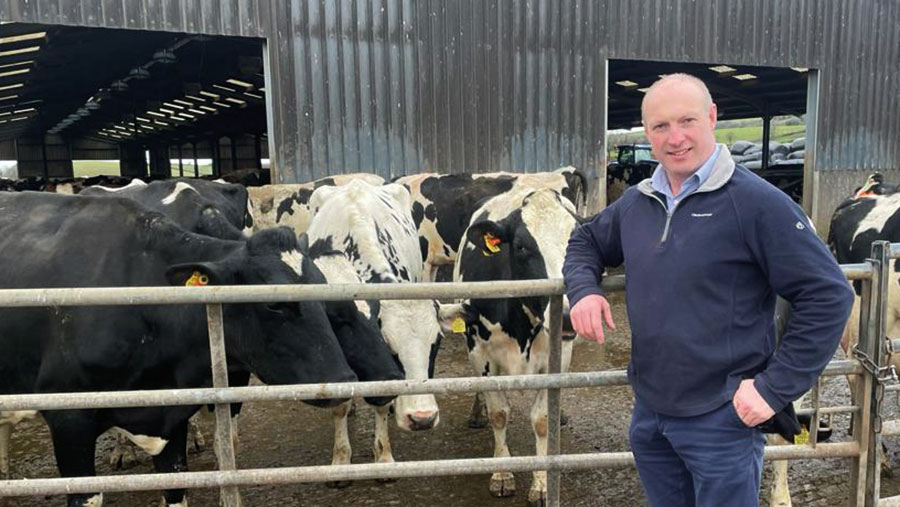Flooring improvements help dairy unit cut lameness by 10%
 © Jenn Davies
© Jenn Davies New housing for 400 cows and improvements to older buildings at Grant Hartman’s dairy farm have done much to improve cow comfort and lameness.
Cubicles have deep sand beds, suitable dimensions and enough lunge space.
However, poor-quality flooring across some parts of the dairy unit has continued to cause mobility problems.
Sand is abrasive and can polish concrete surfaces, and outdoor loafing areas can get very dry with slurry in hot weather, increasing the risk of casualties.
Mr Hartman contacted independent vet consultant Nick Bell when casualties reached five cows a month last April and May.
See also:Should you convert to sand bedding on your dairy?
Dr Bell visited the farm in his capacity as mobility mentor for AHDB’s new Healthy Feet Lite programme.
An accredited scorer from the Register of Mobility Scorers (Roms) assessed the level of lameness in the herd, and Dr Bell followed the cows’ daily route to identify any problem areas.
The dairy team at Trebersed Farm then put forward a series of actions to achieve a target 90% mobility index within five years.
During AHDB’s recent webinar (19 January) on tackling dairy herd mobility, Mr Grantman talked through the changes they have implemented to help achieve their goal.
Farm facts
Trebersed Farm, Camarthen
- 600 Holsteins averaging 12,500 litres a cow a year at 4.01% butterfat and 3.41% protein
- 500 youngstock and 100 beef cattle
- Three times a day milking
- Milk supplied to Muller
1. New grooving
Problem: Poor-quality flooring. Some concreted areas had previously been grooved in a crosshatch pattern to give the cows more purchase, but it was failing in terms of long-term hoof care.
Improvement: Strategic new grooving of some existing concrete areas to reduce numbers of casualties.
Parallel grooves 19mm apart ensure the foot is always in contact with the groove, and a groove depth of at least 10mm allows some moisture to drain from the surface.
Cost: £5.50/sq m
Area grooved: 2,460sq m
Total: £13,530
Benefit: Cows saved (five a month at £1,500 each), assuming the same level of casualties without intervention.

© Grant Hartman
2. Rubber matting
Problem: Cows had plenty of space to drift towards the collecting yard, but had to negotiate a dogleg at the entrance, and a further sharp turn out of the parlour.
Improvement: Fitting rubber matting in problem areas, including collecting yard and 90deg angle turn at parlour exit, to reduce hoof pressure and white lines.
Cost: £38/sq m
Area covered: 128.5sq m
Total: £4,883
Benefit: Loading and exit times from parlour have improved significantly, saving 20-30min of milking time or £900 a month in labour costs. Data across 12 months will be needed to analyse reduction in white line disease.
Mobility score results |
|||
| Mobility index (percentage of cows as an overall total of herd not lame) | Percentage of herd scoring mobility score 2 | Percentage of herd scoring mobility score 3 | |
| June 2020 | 56.8% | 29.6% | 11.3% |
| December 2020 | 68.8% | 23.7% | 7.4% |
“High levels of 2s and 3s can be a little bit demoralising,” says Dr Bell, “but a high sensitivity score does enable you to pinpoint the things that are contributing to lameness. And by having that high level of scrutiny you can really see the things that are going to have the biggest impact.”
Next phase
While one foot-bath in the unit is ideal – long and narrow, enabling two plunges for each foot – the second is much shorter and wider, compromising washing and contact time. The next job is to replace this weak point in the system.
